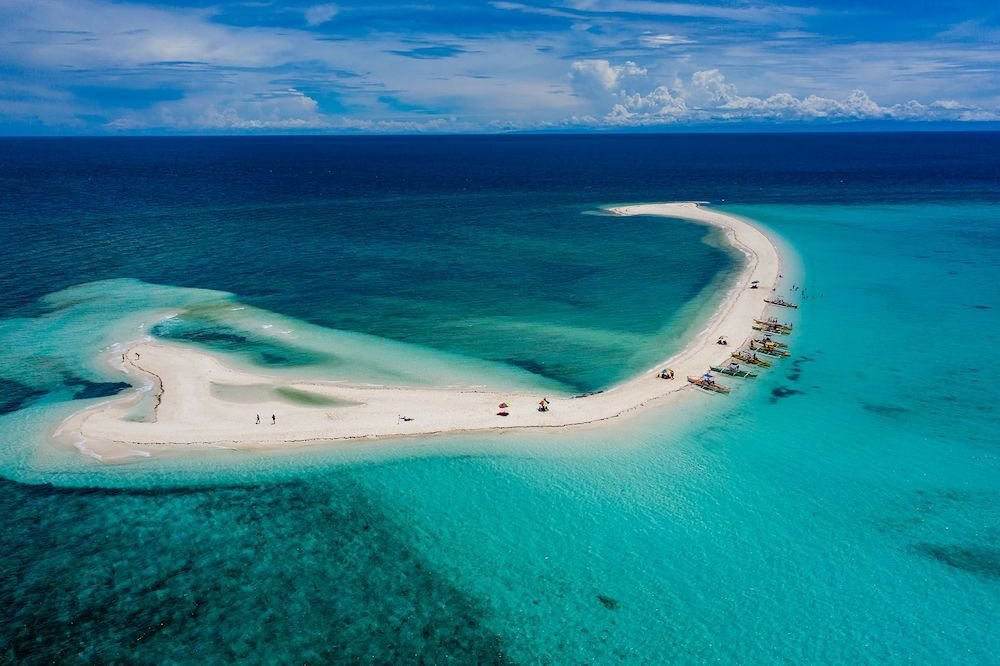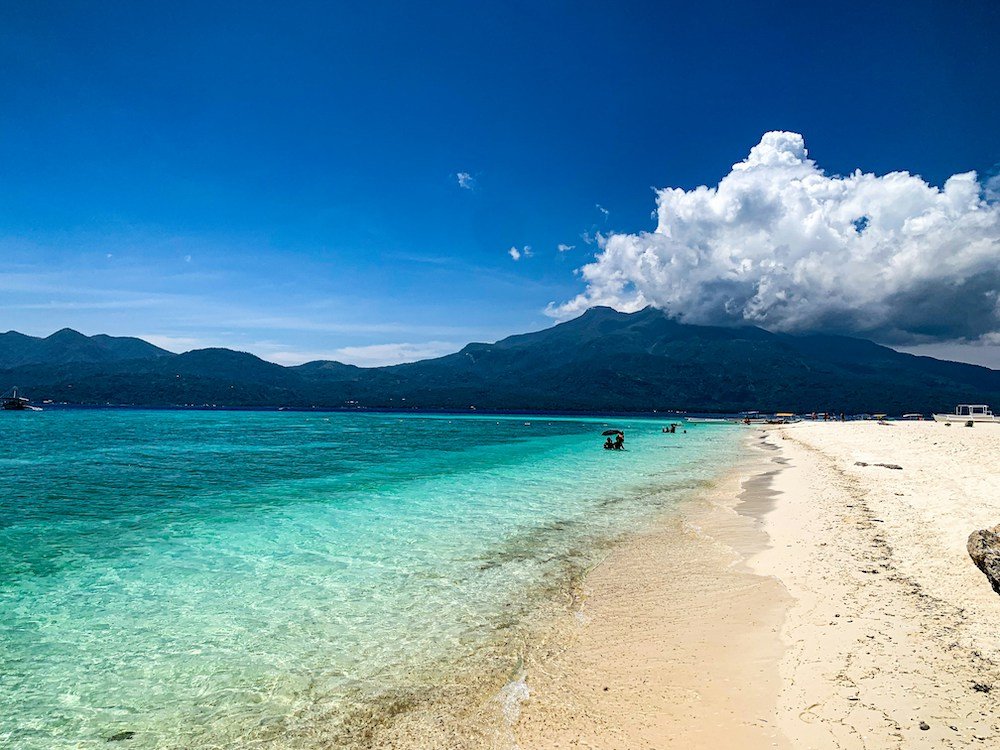
Welcome to Camiguin Island, a gem in the Philippine archipelago that stands out for its extraordinary landscape and rich history.
Often referred to as “The Island Born of Fire,” Camiguin Island is a testament to nature’s power and beauty.
This small island, with its lush forests, stunning waterfalls, and pristine beaches, is the perfect getaway for travelers seeking both adventure and tranquility.
Camiguin Island’s nickname, “The Island Born of Fire,” is not just a poetic moniker but a reflection of its vibrant volcanic activity.
Home to seven volcanoes, including the still-active Mount Hibok-Hibok, the island’s geography is a dynamic and ever-changing tapestry.
This volcanic origin has blessed the island with a unique topography of natural springs, fertile land, and rich marine biodiversity, making it a haven for nature lovers and eco-tourists alike.
The island’s small size belies its grandeur. Despite being just about 238 square kilometers in area, Camiguin Island packs a diverse range of attractions and activities.
From its hot springs that bubble from the volcanic heat below to its cold springs that offer a refreshing respite from the tropical sun, every corner of Camiguin is a discovery waiting to be explored.
As we delve into the heart of this island, we invite you to discover the enchanting beauty of Camiguin Island.
Whether it’s the allure of its volcanic landscapes, the serene beauty of its natural attractions, or the warmth of its people, Camiguin Island promises an unforgettable journey.
So, pack your bags and get ready to explore “The Island Born of Fire,” where every step is an adventure and every vista a masterpiece.
History and Geography
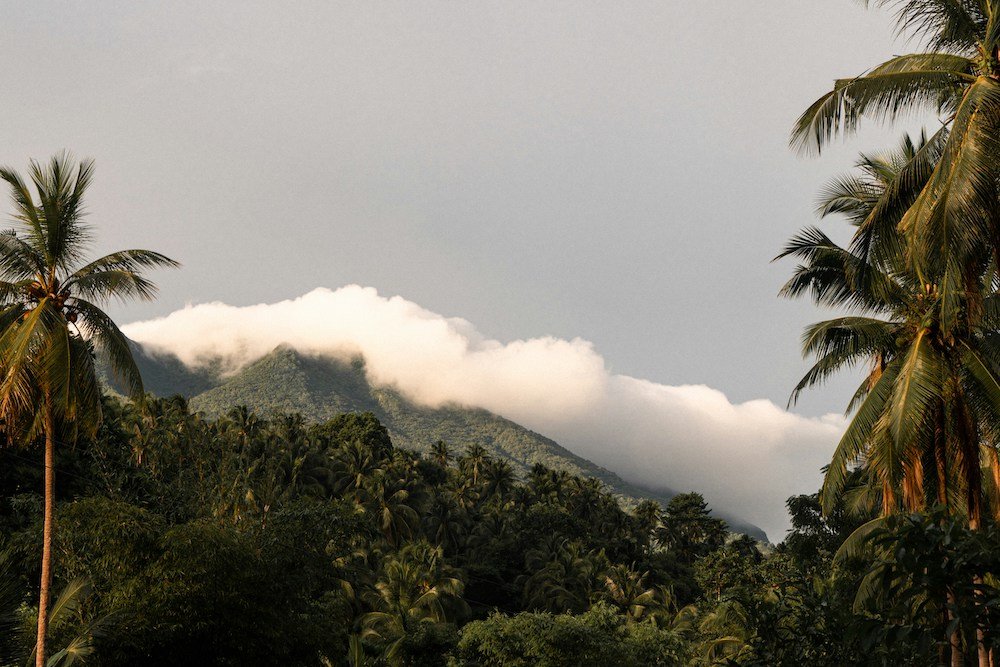
A Glimpse into the Past
Camiguin Island’s history is as intriguing as its landscapes are breathtaking.
Originally settled by the Manobo people and later the Boholanos in the early 16th century, Camiguin has seen a myriad of cultural and natural transformations.
The Spanish era marked the construction of Camiguin’s old churches, some of which stand in ruins today, silent witnesses to the island’s rich historical tapestry.
The most transformative events in Camiguin’s history, however, are its volcanic eruptions.
The most notable of these occurred in the 1870s when the eruption of Mount Vulcan Daan buried the old capital of Catarman, leaving behind the haunting Sunken Cemetery, now a landmark of the island’s resilience and beauty.
A Land Sculpted by Nature
Camiguin Island’s geography is a marvel of volcanic activity, with its landscape dominated by seven volcanoes, including the active Mount Hibok-Hibok.
These geological formations are not just the backbone of the island’s “Born of Fire” moniker but also the creators of its stunning natural attractions.
The volcanoes have given rise to hot and cold springs, lush forests, and fertile lands that support a diverse ecosystem.
The island is the second smallest province in the Philippines in terms of both population and land area, but it boasts an incredible density of natural wonders.
From the sparkling waters of White Island, a sandbar that shifts and changes shape with the tide, to the mystic depths of the Blue Lagoon, each corner of Camiguin Island offers a unique blend of beauty and adventure.
Its topography is a complex tapestry of rugged mountains, cascading waterfalls, and serene beaches that outline the island, making it a haven for outdoor enthusiasts and nature lovers.
Furthermore, Camiguin Island is surrounded by rich marine life, making it a prime spot for diving and snorkeling.
The island’s unique underwater landscapes are home to vibrant coral reefs and a variety of marine species, adding another layer to its natural majesty.
Camiguin’s geography, marked by its volcanic heritage, not only shapes the island’s physical beauty but also enriches its soil, making it fertile ground for agriculture.
The island is renowned for its sweet lanzones, a tropical fruit that is celebrated annually with the Lanzones Festival, a testament to the island’s cultural and agricultural heritage.
In exploring the history and geography of Camiguin Island, one cannot help but be mesmerized by the intricate dance between its volcanic origins and the lush, vibrant life it supports today.
This “Island Born of Fire” stands as a testament to nature’s resilience and beauty, inviting travelers to explore its rich history, stunning landscapes, and the warm spirit of its people.
Why Visit Camiguin Island?

Camiguin Island, with its captivating blend of natural wonders, rich history, and serene beauty, stands out as a must-visit destination in the Philippines.
Here are several compelling reasons why this “Island Born of Fire” deserves a spot on your travel bucket list:
Pristine Beaches
Camiguin Island is encircled by some of the most pristine and picturesque beaches in the country.
White Island, an uninhabited white sandbar just off the coast, offers panoramic views of Mt. Hibok-Hibok and is perfect for sunbathing, swimming, and enjoying the tranquility of nature.
Mantigue Island Nature Park is another gem, featuring powdery white sands and a rich marine sanctuary ideal for snorkeling and diving enthusiasts.
Healing Hot Springs
The volcanic activity of Camiguin Island blesses it with numerous hot springs, such as Ardent Hot Springs, where warm, mineral-rich waters provide a natural spa experience.
Nestled amid lush vegetation, these hot springs are perfect for a relaxing soak, especially after a day of exploring the island’s rugged terrains.
Rich Historical Tapestry
Camiguin Island’s history is deeply embedded in its landscape. From the ruins of Old Spanish churches to the Sunken Cemetery, a unique underwater site marked by a large cross, the island tells stories of its past in every corner.
These historical sites offer a glimpse into the island’s resilient spirit and the rich cultural heritage that shapes its community.
Diverse Natural Attractions
Beyond beaches and hot springs, Camiguin boasts a diverse array of natural attractions.
The island’s interior is home to lush forests, dramatic waterfalls like Katibawasan and Tuasan, and cold springs with crystal-clear waters.
The adventurous can hike up Mt. Hibok-Hibok to witness breathtaking views or explore the mysterious depths of Sto. Niño Cold Spring.
The Serene Beauty of Camiguin
Perhaps what sets Camiguin Island apart is its serene beauty and the laid-back, peaceful vibe it offers.
Unlike more commercialized tourist destinations, Camiguin provides a tranquil retreat where one can truly connect with nature.
Whether it’s the gentle lapping of the waves against the shore, the soothing warmth of a hot spring, or the cool mist of a waterfall, Camiguin envelops its visitors in an atmosphere of calm and relaxation.
A Melting Pot of Attractions
Camiguin Island is a place where every type of traveler can find something to love.
Its rich biodiversity makes it a haven for nature lovers and eco-tourists, while its historical sites fascinate those interested in the Philippines’ colonial past and indigenous cultures.
Food enthusiasts will enjoy the island’s culinary offerings, especially its famous lanzones and other tropical fruits.
In conclusion, Camiguin Island is a destination that combines the allure of unspoiled nature, the richness of history, and the promise of peace and relaxation.
Its unique selling points make it not just a place to visit but an experience to be cherished.
Whether you’re seeking adventure, a dive into history, or simply a serene escape from the hustle and bustle of daily life, Camiguin Island awaits with open arms.
Getting There
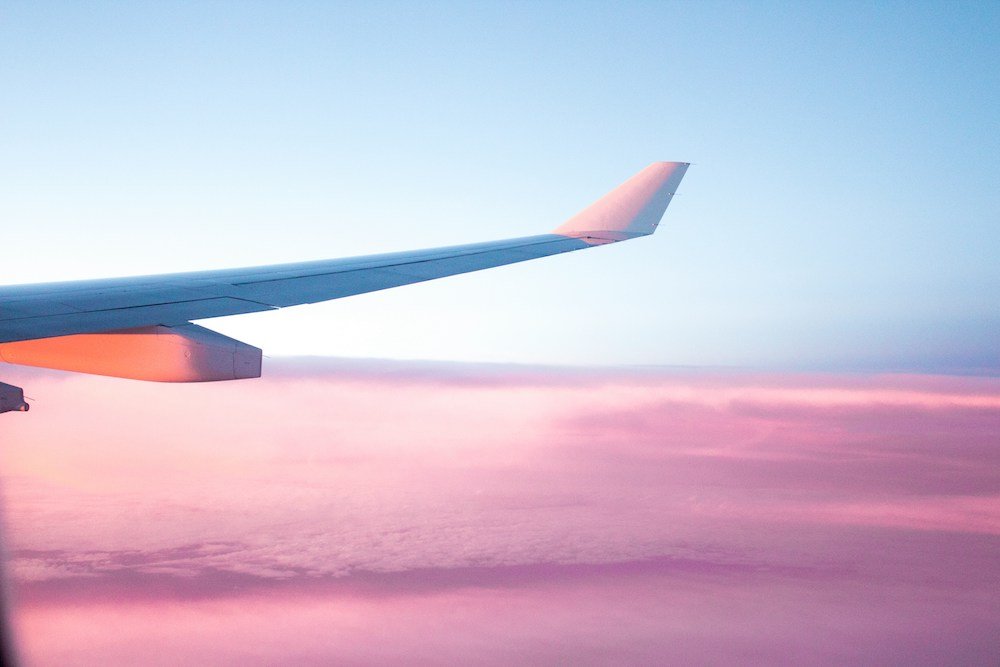
Navigating your way to Camiguin Island is an adventure in itself, offering a glimpse into the Philippines’ diverse landscapes and vibrant local life.
Whether you’re coming from within the Philippines or traveling from abroad, reaching this island paradise involves a combination of air and sea travel, each route offering its own unique experiences.
From Major Cities in the Philippines
- Via Cagayan de Oro: The most common route to Camiguin is through the city of Cagayan de Oro on the northern coast of Mindanao. From Cagayan de Oro, visitors can take a two-hour bus or van ride to Balingoan Port, followed by a ferry ride to Benoni Port in Camiguin, which lasts about an hour. Ferries run regularly throughout the day, but it’s wise to check the schedule in advance as weather conditions can affect departures.
- Via Bohol: Another option is to travel from Bohol, an island known for its Chocolate Hills and tarsiers. From Jagna Port in Bohol, take a direct ferry to Camiguin. This route is less frequent, so planning ahead is crucial.
International Visitors
For international visitors, the journey begins with a flight to the Philippines. The nearest international gateway is Mactan-Cebu International Airport in Cebu.
From Cebu, you can catch a domestic flight to Camiguin Airport, which is the most direct route to the island.
Alternatively, you can fly to Laguindingan Airport in Cagayan de Oro and follow the overland and sea route to Camiguin.
Best Time to Visit
Camiguin Island, like much of the Philippines, experiences two main seasons: the dry season and the wet season.
The best time to visit is during the dry season, which runs from March to June, when the weather is sunny and conducive to exploring the island’s natural attractions.
This period also coincides with the Lanzones Festival, usually held in October, celebrating the harvest of the island’s famed sweet lanzones fruit with colorful parades, dances, and cultural shows.
However, the island maintains its lush beauty year-round, and visiting during the off-peak season (July to December) can offer a more serene experience, with fewer tourists and often more competitive accommodation rates.
Keep in mind that the wet season can bring rain, especially from July to September, which might affect outdoor activities.
Tips for Travelers
- Plan Ahead: Especially if you’re traveling during peak season or aiming to catch a specific ferry route, booking tickets in advance can save you time and hassle.
- Check the Weather: Weather conditions can affect travel plans, particularly sea travel. Always check the weather forecast before your journey.
- Pack Accordingly: Camiguin’s diverse attractions mean you’ll be switching from beachwear to hiking gear. Pack light but include essentials for different activities, including sun protection and mosquito repellent.
Attractions and Activities
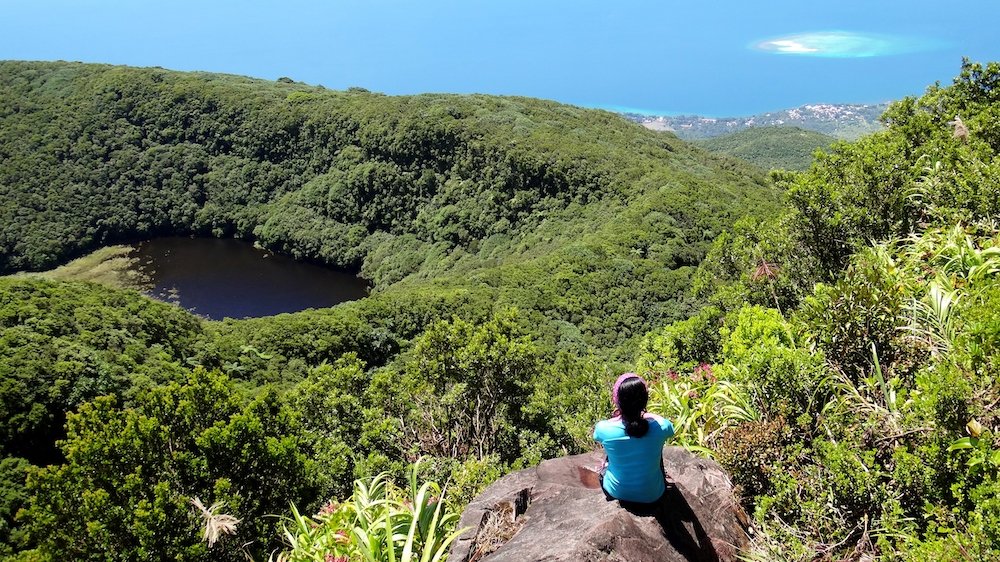
Camiguin Island, with its rich tapestry of natural wonders, historical landmarks, and thrilling adventures, offers something for every type of traveler.
From the serene to the exhilarating, the island’s attractions are as diverse as they are unique.
Natural Attractions
Volcanic Landscapes
The very essence of Camiguin’s identity is its volcanic terrain, which has sculpted a landscape unlike any other.
Mount Hibok-Hibok, an active volcano, offers a challenging yet rewarding hike, culminating in breathtaking panoramic views of the island and the sea.
The volcanic soil enriches the island with fertile lands, creating lush greenery and vibrant ecosystems.
Waterfalls and Springs
Camiguin is home to several waterfalls and springs, each offering a tranquil escape into nature. Katibawasan Falls, with its majestic 250-foot drop into a clear pool, is perfect for a refreshing swim.
Sto. Niño Cold Spring and Ardent Hot Spring cater to those looking to relax in natural waters, the former being a cool respite from the tropical heat, and the latter a soothing thermal bath under the stars.
Pristine Beaches and Marine Sanctuaries
The island’s beaches, with their powdery white sand and crystal-clear waters, are ideal for sunbathing, swimming, and simply unwinding.
White Island, an uninhabited sandbar just off the coast, offers stunning sunrise and sunset views.
For snorkeling and diving enthusiasts, the marine sanctuaries around Camiguin are teeming with life.
Mantigue Island Nature Park is a haven for diverse marine species and healthy corals, providing an underwater spectacle for divers and snorkelers alike.
Historical and Cultural Sites
Sunken Cemetery and Old Church Ruins
The Sunken Cemetery, marked by a large cross standing in the sea, is a haunting reminder of the island’s volcanic past.
It offers a unique snorkeling experience, allowing visitors to explore the underwater graves.
Nearby, the Old Spanish Church Ruins serve as a historical landmark, telling the story of the island’s resilience in the face of natural disasters.
Lanzones Festival
The Lanzones Festival is a vibrant celebration of Camiguin’s most beloved fruit, the lanzones.
Held annually in October, the festival features street dancing, parades, and cultural shows, showcasing the island’s rich heritage and community spirit.
Outdoor Adventures
Hiking and Exploration
Beyond its volcanoes, Camiguin offers numerous trails for hiking and exploration, leading to hidden gems and stunning vistas.
The island’s rugged terrain and dense forests are perfect for adventure seekers looking to immerse themselves in nature.
Island Hopping and Underwater Caves
Island hopping is a must-do in Camiguin, with stops at White Island and Mantigue Island offering a mix of relaxation and exploration.
For the more adventurous, diving into Camiguin’s underwater caves reveals a mysterious world beneath the waves, with guided tours available for experienced divers.
Camiguin Island encapsulates the essence of natural beauty, historical depth, and adventurous spirit.
Whether you’re marveling at its volcanic landscapes, soaking in its hot springs, exploring its rich marine life, or celebrating its cultural heritage, Camiguin promises an unforgettable experience that resonates with the soul.
Where to Stay
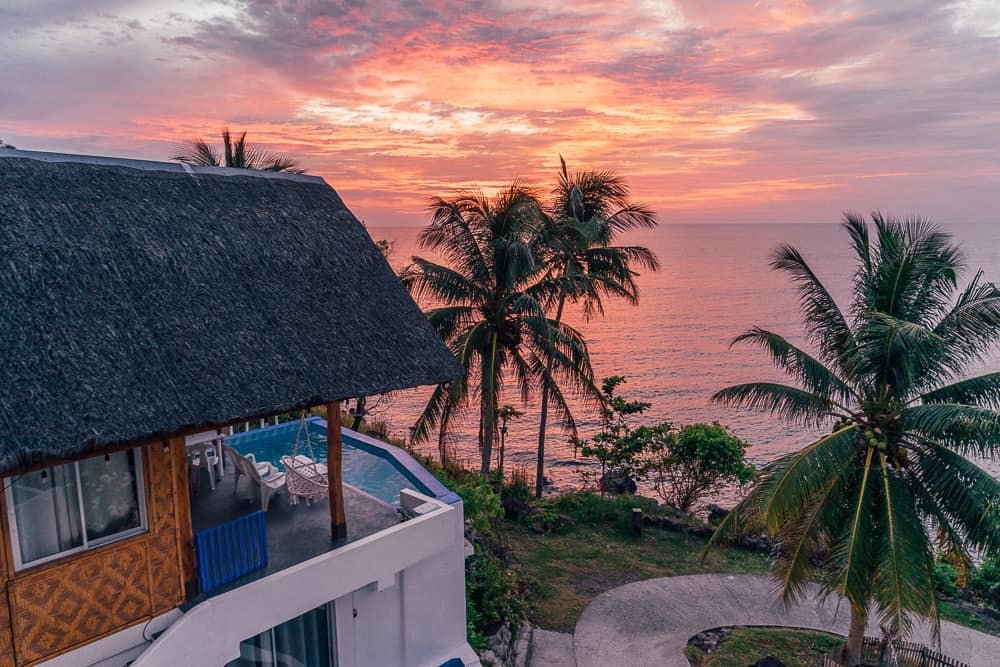
Camiguin Island caters to a wide range of travelers, offering accommodations that span from luxurious resorts to cozy, budget-friendly guesthouses.
Whether you’re seeking a tranquil retreat by the sea or a comfortable base from which to explore the island’s natural and cultural wonders, Camiguin has something to suit every preference and budget.
Luxury Resorts
For those looking to indulge in a bit of luxury, Camiguin boasts several upscale resorts that offer exquisite rooms, top-notch amenities, and stunning views of the island’s natural beauty.
These resorts often feature private beaches, swimming pools, spas, and on-site dining, providing a complete and luxurious island experience.
Ideal for couples on a romantic getaway or families wanting to enjoy a stress-free holiday, luxury resorts in Camiguin promise comfort, privacy, and impeccable service.
Mid-Range Hotels
Mid-range hotels in Camiguin offer a great balance of comfort and value, making them perfect for travelers who want a pleasant stay without breaking the bank.
These accommodations typically provide essential amenities such as air-conditioned rooms, private bathrooms, and Wi-Fi access.
Many are conveniently located near the island’s major attractions, ensuring that guests have easy access to Camiguin’s best experiences.
Budget-Friendly Guesthouses and Hostels
Budget travelers and backpackers will find a variety of guesthouses, hostels, and homestays scattered across the island.
These accommodations are not only affordable but also offer a more personal and authentic experience.
Staying in a guesthouse or homestay can provide an opportunity to interact with locals and gain insights into the island’s culture and way of life.
Although these options may offer basic amenities, they are clean, comfortable, and warmly welcoming.
Choosing the Best Area to Stay
When deciding where to stay in Camiguin, consider your itinerary and what you most want to experience.
- Mambajao Area: As the island’s capital and main hub, Mambajao offers a variety of accommodation options and is conveniently located near White Island, Ardent Hot Spring, and the Sunken Cemetery. It’s ideal for those who want easy access to both attractions and dining options.
- Near White Island and Mantigue Island: For beach lovers and those looking to indulge in snorkeling or diving, staying near these islands can maximize your time in the water. Resorts and guesthouses on the northern and eastern coasts offer quick boat trips to these pristine locations.
- Inland Accommodations: If you’re drawn to Camiguin for its hiking and hot springs, consider staying in the central or western parts of the island. These areas offer serene retreats close to Mount Hibok-Hibok and its surrounding natural attractions.
Food and Dining
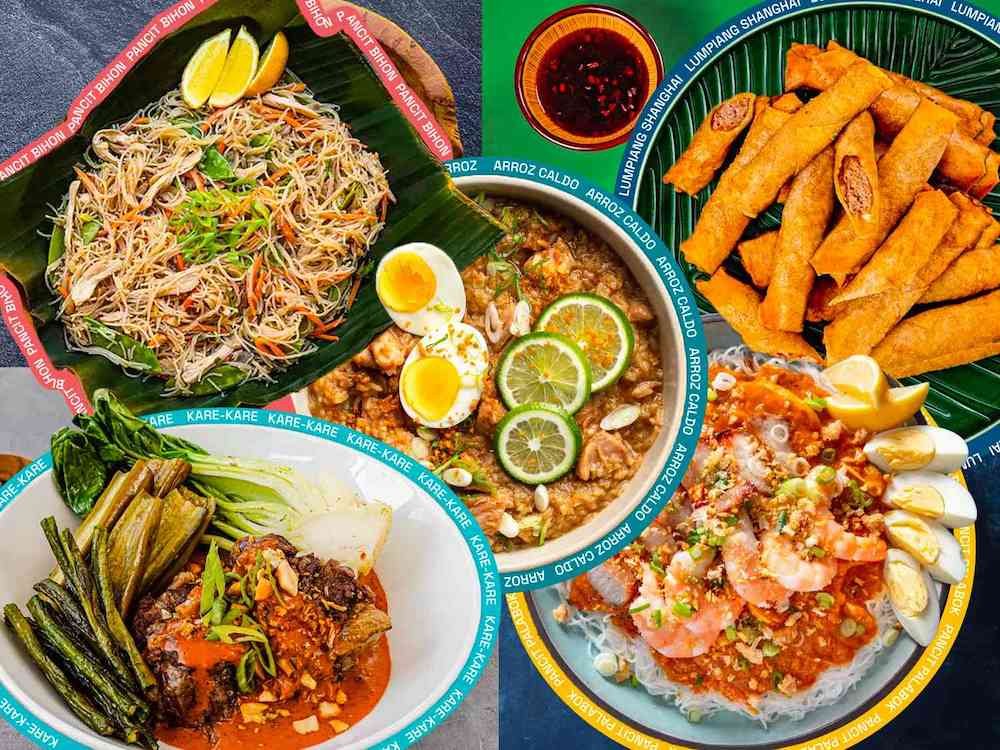
Camiguin Island’s culinary scene is as diverse and vibrant as its natural landscape, offering a delightful array of local dishes and delicacies that reflect the island’s rich cultural heritage and natural bounty.
From freshly caught seafood to exotic fruits and traditional Filipino cuisine with a local twist, dining in Camiguin is an adventure in itself.
Local Dishes and Delicacies
One cannot talk about Camiguin’s food without mentioning its most famous fruit, the lanzones. Sweeter and juicier than those found elsewhere, Camiguin’s lanzones are celebrated with an annual festival every October. But the island’s culinary offerings extend far beyond this sweet treat.
Seafood, freshly caught and served in a variety of ways, is a staple here. Kinilaw (a Filipino ceviche), grilled fish, and seafood sinigang (sour soup) are must-try dishes that showcase the freshness of the local catch.
Camiguin also offers its unique take on Filipino classics. Try the “pastel,” a soft bun filled with yema (sweet custard), perfect for a light snack or dessert.
For a hearty meal, savor a plate of “sun-ripened” adobo, cooked traditionally with vinegar and soy sauce but with a twist of being left under the sun to enhance its flavors.
Recommendations for Restaurants and Eateries
Camiguin boasts a variety of restaurants and eateries catering to all tastes and budgets. Here are a few recommended spots to experience the local cuisine:
- La Dolce Vita: Known for its Italian cuisine with a tropical twist, this restaurant also offers a selection of Filipino dishes. The ambiance is cozy, and the view of the sunset is spectacular, making it a perfect spot for a romantic dinner.
- Guerrera Restaurant: Offering a farm-to-table experience, Guerrera specializes in Asian cuisine, with dishes crafted from the freshest local ingredients. Their menu changes seasonally, ensuring a unique dining experience each visit.
- Luna Ristorante: For those craving Italian in the heart of Camiguin, Luna Ristorante is a must-visit. Their homemade pasta and pizza, coupled with the warm, inviting atmosphere, make for a satisfying meal.
- J&A Fishpen: This restaurant and resort offer dining in huts over a lagoon, providing a unique ambiance. Their specialty is seafood, served fresh and cooked to your liking.
- CheckPoint Snack Bar: A great spot for budget-friendly meals and snacks, offering delicious options like burgers, fries, and local dishes. It’s perfect for a quick bite before heading out on your island adventures.
Camiguin’s dining scene is a delightful reflection of its natural and cultural richness, offering flavors and experiences that cater to every palate.
Whether you’re indulging in a gourmet meal by the sea or enjoying a simple dish of freshly caught fish, the island’s culinary offerings are sure to leave a lasting impression.
Travel Tips and Practical Information
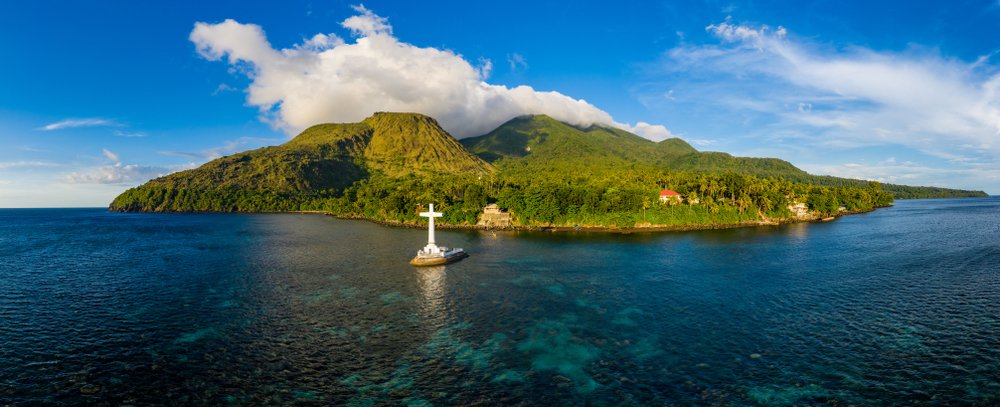
Exploring Camiguin Island is an adventure that requires some preparation and knowledge to ensure a smooth and enjoyable experience.
From navigating the island’s transport system to understanding local customs and health advisories, here are essential travel tips and practical information for visitors to Camiguin Island.
Transportation on the Island
- Renting Motorcycles or Scooters: One of the most convenient ways to explore Camiguin is by renting a motorcycle or scooter. This option offers flexibility and the freedom to visit attractions at your own pace. Rental services are available in major areas, and rates are reasonable. Ensure you have a valid driver’s license and wear a helmet for safety.
- Multicabs and Jeepneys: For those who prefer not to drive, multicabs and jeepneys are common modes of public transportation around the island. They are cost-effective and offer a more local travel experience. However, their routes and schedules might be limited, so it’s important to plan accordingly.
- Tricycles: For short distances, tricycles are a convenient and affordable option. They can be hailed in most parts of the island and are ideal for getting around towns or to and from your accommodation.
Currency and Payments
- Philippine Peso (PHP): The official currency in Camiguin, as in the rest of the Philippines, is the Philippine Peso. It’s advisable to have cash on hand, as many establishments, especially in rural areas, do not accept credit cards.
- ATMs and Cash: While there are ATMs in Mambajao and a few other locations, their availability can be limited, and they may occasionally run out of cash. It’s wise to withdraw enough money before heading to more remote areas of the island.
Language
- Cebuano/Bisaya: The primary language spoken in Camiguin is Cebuano (also known as Bisaya). However, English is widely understood and spoken, especially in tourist areas, making communication generally easy for visitors.
Safety Tips
- Stay Informed: Keep up to date with local news and weather forecasts, especially during the rainy season, as Camiguin is susceptible to tropical storms.
- Respect Nature: When visiting natural attractions, follow safety guidelines and respect the environment. Always stay on designated paths and heed any warnings about volcanic activity or wildlife.
- Secure Valuables: While Camiguin is generally safe, it’s always prudent to secure your valuables and be cautious in crowded places.
Health Advisories
- Stay Hydrated: The tropical climate can be dehydrating, especially after a day of exploring. Drink plenty of bottled water to stay hydrated.
- Protect Against Mosquitoes: Use insect repellent, especially in the early morning and late afternoon, to protect against mosquito-borne diseases.
- Travel Insurance: It’s advisable to have travel insurance that covers medical emergencies, especially if you plan to engage in outdoor activities.
Sample Itineraries
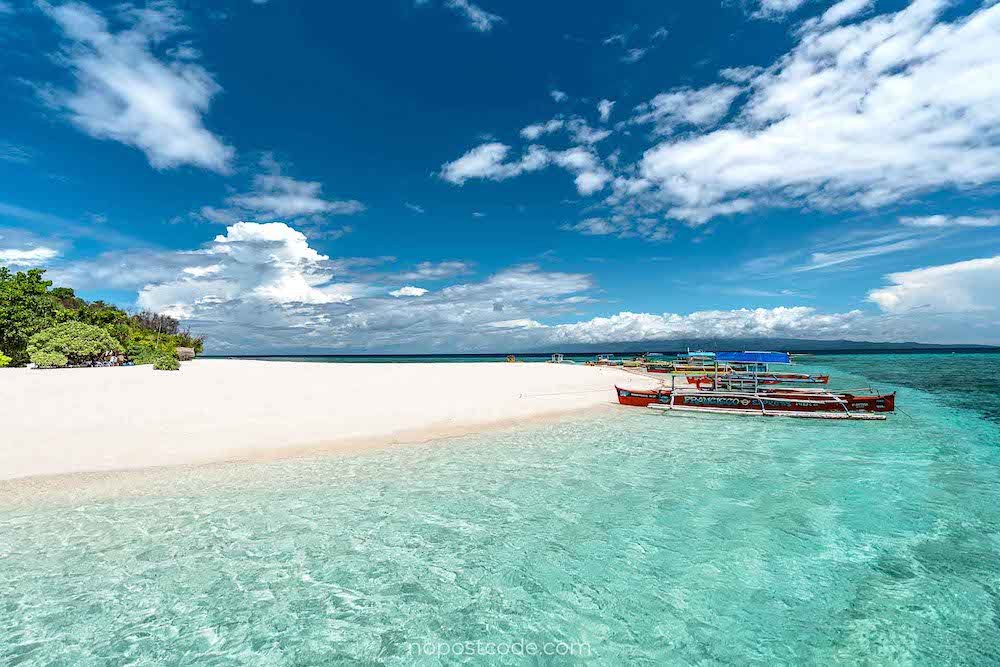
Whether you have a long weekend or an entire week to explore, Camiguin Island offers a diverse range of experiences to fill your days with adventure, relaxation, and discovery.
Here are sample itineraries tailored for 3, 5, and 7-day stays, designed to help you make the most of your visit to this enchanting island.
3-Day Itinerary: The Essentials
Day 1: Explore Natural Wonders
- Morning: Start your day with a visit to the Ardent Hot Springs for a relaxing dip in its warm waters.
- Afternoon: Head to Katibawasan Falls, and enjoy the stunning waterfall and its refreshing pool.
- Evening: Enjoy a beachside dinner at one of Mambajao’s restaurants, sampling local delicacies.
Day 2: Island and Historical Sights
- Morning: Take a boat trip to White Island for sunbathing and snorkeling in its crystal-clear waters.
- Afternoon: Visit the Sunken Cemetery and Old Church Ruins to delve into the island’s history.
- Evening: Relax at your accommodation or explore local eateries for dinner.
Day 3: Culture and Leisure
- Morning: Wander through Mambajao’s local markets to shop for souvenirs, like handcrafted items and local produce.
- Afternoon: Spend your last afternoon relaxing at a beach or visiting a nearby island, like Mantigue Island Nature Park.
- Evening: Enjoy a leisurely dinner, reflecting on your Camiguin adventure.
5-Day Itinerary: The Explorer’s Journey
Day 1 to 3: Follow the 3-day itinerary for an immersive introduction to Camiguin’s natural, historical, and cultural highlights.
Day 4: Adventure and Relaxation
- Morning: Embark on a hike to Mount Hibok-Hibok to experience breathtaking views.
- Afternoon: Post-hike, soothe your muscles with a dip in the Sto. Niño Cold Spring.
- Evening: Sample more local cuisine, perhaps trying dishes made with the island’s famous lanzones.
Day 5: Underwater Exploration
- Morning to Afternoon: Dedicate your day to snorkeling or diving at one of Camiguin’s marine sanctuaries, discovering vibrant coral reefs and marine life.
- Evening: Spend your last night at a beachfront restaurant, enjoying the serene ocean view.
7-Day Itinerary: The Ultimate Camiguin Adventure
Day 1 to 5: Combine the activities from the 3-day and 5-day itineraries for a comprehensive exploration of Camiguin’s diverse offerings.
Day 6: Leisure and Local Life
- Morning: Take a leisurely bike ride around the island, stopping at local villages and hidden beaches.
- Afternoon: Visit a local farm or plantation to learn about the island’s agricultural practices and sample fresh produce.
- Evening: Enjoy a relaxed evening dining at a recommended local spot.
Day 7: Serenity and Departure
- Morning: Spend your final hours on Camiguin at a serene beach or a quiet spot overlooking the sea, reflecting on your journey.
- Afternoon: Gather your memories and souvenirs, and prepare for your departure from the island.
Tips for Making the Most of Your Visit
- Be Flexible: While it’s good to have a plan, Camiguin’s laid-back vibe and natural beauty encourage spontaneity. Be open to changing your plans based on local recommendations or weather conditions.
- Stay Local: Engage with local residents and try local foods; it’s a great way to immerse yourself in Camiguin’s culture.
- Respect the Environment: Camiguin is known for its pristine natural beauty. Always practice responsible tourism by keeping beaches clean and respecting wildlife and natural habitats.
These itineraries are designed to offer a balanced mix of Camiguin Island’s best attractions, from its stunning natural landscapes to its rich cultural heritage.
Tailor them to suit your interests and pace, and you’re sure to have an unforgettable experience.
Sustainable Travel in Camiguin
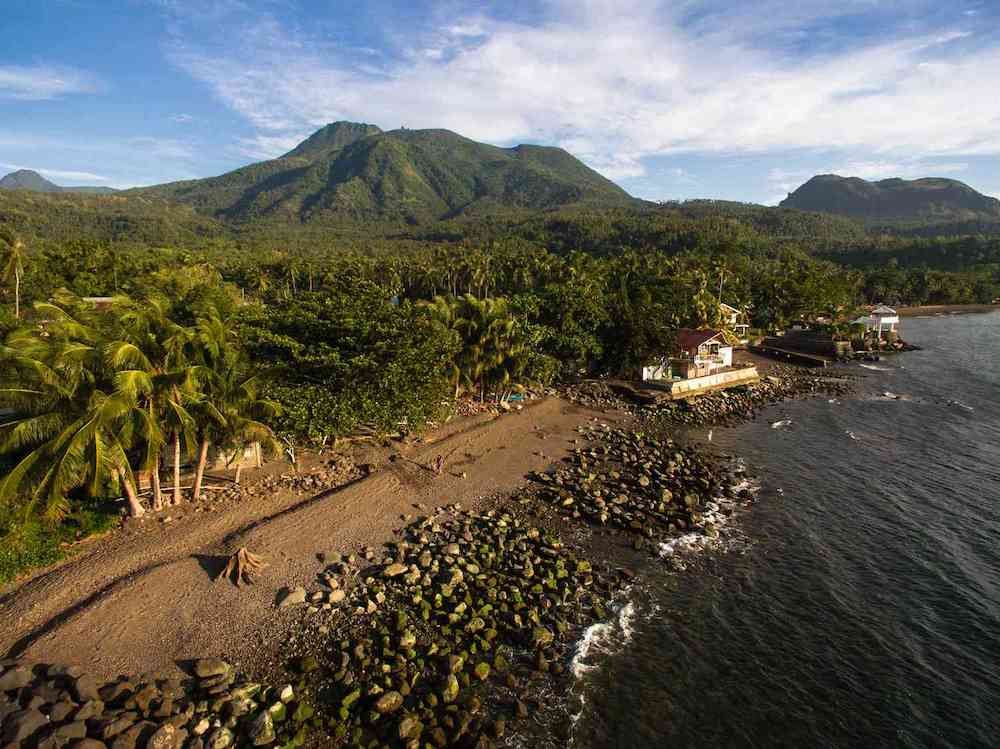
As a pristine natural paradise, Camiguin Island’s beauty and biodiversity are treasures that require conscious efforts to preserve.
Sustainable travel practices are not just encouraged; they are essential for ensuring that future generations can also enjoy and appreciate this enchanting island.
Here are ways visitors can contribute to sustainability and conservation efforts while exploring Camiguin.
Embrace Eco-Friendly Practices
- Reduce Plastic Use: Minimize your environmental impact by avoiding single-use plastics. Carry reusable water bottles, bags, and containers. Many accommodations and restaurants support this initiative and provide refilling stations for water.
- Conserve Water and Energy: Be mindful of your water and energy consumption. Simple actions like turning off lights and air conditioning when not in use and taking shorter showers can make a significant difference.
- Support Local and Sustainable Businesses: Choose accommodations, tour operators, and other service providers who demonstrate sustainable practices and contribute positively to the community. This can include eco-friendly lodges, local artisans, and restaurants that use locally sourced ingredients.
Respect Wildlife and Natural Habitats
- Observe, Don’t Disturb: When exploring Camiguin’s diverse ecosystems, always maintain a respectful distance from wildlife. Avoid touching, feeding, or disturbing animals, both on land and in the water.
- Stay on Designated Paths: Preserve the natural environment by sticking to marked trails during hikes and excursions. This helps prevent erosion, protects plant life, and maintains the natural habitat.
- Participate in Eco-Tourism Activities: Engage in tours and activities that emphasize environmental education, conservation, and respect for nature. This can include guided nature hikes, snorkeling tours that promote coral reef protection, and community-based cultural tours.
Contribute to Conservation Efforts
- Join Cleanup Drives: Participate in beach and underwater cleanup activities if available. These efforts not only help keep Camiguin beautiful but also raise awareness about the impact of waste on marine ecosystems.
- Educate Yourself and Others: Take the time to learn about the island’s environmental challenges and conservation efforts. Share this knowledge with fellow travelers and your community back home to spread awareness and encourage sustainable travel practices.
- Support Local Conservation Projects: Consider donating to or volunteering with local organizations dedicated to environmental protection, wildlife conservation, and community development in Camiguin.
Travel Thoughtfully
- Plan Your Visit During Off-Peak Seasons: Traveling during less busy times can help reduce the pressure on local resources and distribute tourism benefits throughout the year.
- Embrace the Local Culture: Respect local customs, traditions, and community rules. Engaging with the island’s culture in a thoughtful and respectful manner enriches your travel experience and supports cultural preservation.
- Leave No Trace: Ensure that you leave places as you found them or even better. Dispose of waste properly, avoid taking natural souvenirs such as shells and rocks, and refrain from leaving graffiti or carving names into trees.
Conclusion
Camiguin Island, with its nickname “The Island Born of Fire,” stands as a testament to the awe-inspiring power of nature and the resilience of its people.
From its verdant landscapes crafted by volcanic forces to its crystal-clear waters teeming with marine life, Camiguin offers a sanctuary for those seeking adventure, tranquility, and a deep connection with nature.
This guide has navigated through the island’s rich history, diverse geography, and the multitude of activities that make Camiguin a must-visit destination.
The island’s unique blend of natural wonders, from hot springs and waterfalls to pristine beaches and underwater sanctuaries, beckons travelers to explore its beauty.
Camiguin’s historical and cultural sites, including the hauntingly beautiful Sunken Cemetery and the vibrant Lanzones Festival, offer a glimpse into the island’s soul, telling stories of its past and present.
Accommodations on Camiguin cater to every taste and budget, ensuring a comfortable stay amidst the natural splendor.
The culinary scene, with its emphasis on local flavors and ingredients, promises a delightful gastronomic journey.
Practical travel tips and a commitment to sustainable tourism practices ensure that visitors can enjoy Camiguin’s offerings while preserving its beauty for future generations.
Whether you’re planning a short getaway or a longer exploration, Camiguin Island offers an array of experiences that can be tailored to your interests.
The suggested itineraries are just a starting point; the true magic of Camiguin lies in its ability to surprise and enchant visitors with its hidden gems and warm hospitality.
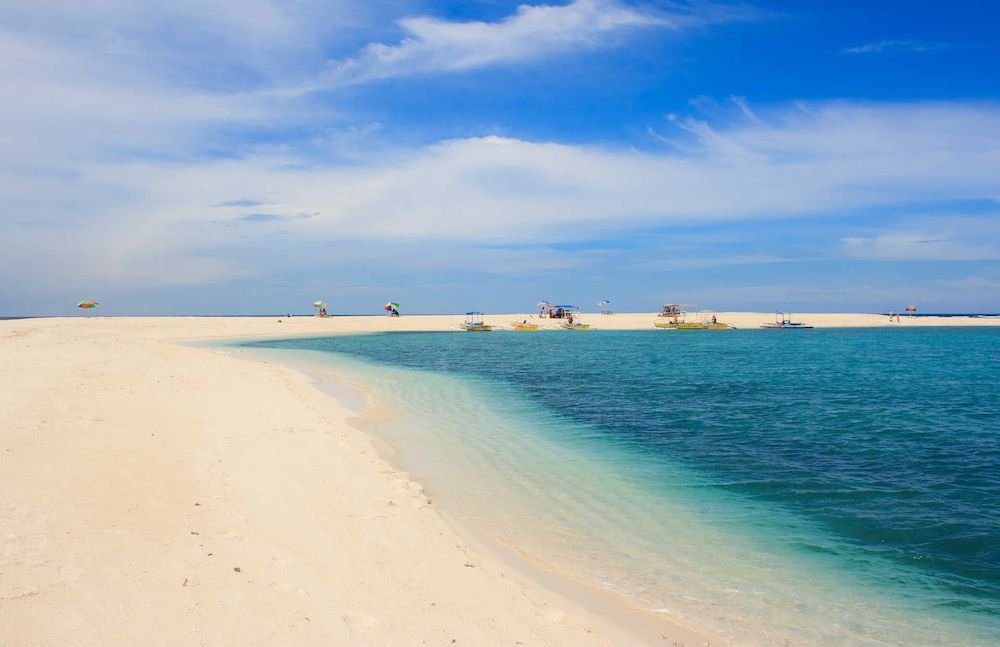
FAQ’s About Camiguin Island:
What is special about Camiguin Island?
Camiguin Island, known as the “Island Born of Fire,” is special for its stunning natural beauty, rich history, and vibrant culture.
Its landscape is uniquely marked by seven volcanoes, including the active Mount Hibok-Hibok, which has shaped the island’s geography and biodiversity.
Camiguin is famed for its pristine beaches, crystal-clear waters, hot and cold springs, and the remarkable Sunken Cemetery, a testament to its volcanic past.
The island’s small size belies the diversity of attractions it offers, from snorkeling in marine sanctuaries to exploring ancient church ruins and participating in the vibrant Lanzones Festival.
How do you get to Camiguin Island Philippines?
Getting to Camiguin Island typically involves a combination of air and sea travel. Visitors can fly to nearby cities such as Cagayan de Oro or Bohol and then take a ferry to Camiguin.
The most common route is flying into Cagayan de Oro, followed by a bus or van ride to Balingoan Port, and then a ferry ride to Benoni Port in Camiguin.
Alternatively, there are direct flights available from Cebu to Camiguin Airport, offering a more direct but possibly more expensive option.
Where is the Camiguin Island located?
Camiguin Island is located in the Bohol Sea, northern Mindanao in the Philippines.
It is geographically close to the provinces of Misamis Oriental and Bohol, making it accessible from both Mindanao and the Visayas regions.
Despite its proximity to major islands, Camiguin maintains a serene and unspoiled charm, largely due to its volcanic nature and the lush landscapes that define it.
Why do tourists visit Camiguin?
Tourists visit Camiguin for its unparalleled natural attractions, serene beauty, and the chance to explore an island rich in history and culture.
From the adventurous treks to its volcanoes and waterfalls to the relaxing dips in its hot and cold springs, Camiguin offers a wide array of experiences.
The island’s beaches and marine sanctuaries are perfect for snorkeling and diving enthusiasts, while its historical sites provide a glimpse into the island’s past.
The warm hospitality of its people, coupled with the island’s natural wonders, makes Camiguin a captivating destination.
Is Camiguin safe for tourist?
Camiguin is generally considered safe for tourists.
Like many places in the Philippines, the island is known for the friendliness and hospitality of its residents.
However, visitors are always advised to exercise common sense and caution, especially when exploring remote areas or participating in outdoor activities.
It’s important to respect local guidelines and environmental advisories, particularly concerning volcanic activity.
What language is spoken in Camiguin?
The primary language spoken in Camiguin is Cebuano (Bisaya), as it is in many parts of the Visayas and Mindanao regions.
English is widely understood and spoken, especially in tourist areas, making communication for international visitors relatively easy.
Is Camiguin Island worth visiting?
Absolutely, Camiguin Island is worth visiting for anyone looking to experience the natural beauty, cultural richness, and adventurous activities of a unique island destination.
Its compact size packed with diverse attractions makes it an ideal spot for both relaxation and adventure, catering to a wide range of interests and preferences.
Is Camiguin Island the most beautiful island in the Philippines?
While beauty is subjective, Camiguin Island is often cited as one of the most beautiful islands in the Philippines due to its pristine natural environments, volcanic landscapes, and the diversity of its attractions.
Its unspoiled beauty, combined with the relative calm of its surroundings, sets it apart from more commercialized destinations, making it a treasure for those who discover it.
How long to spend in Camiguin?
The ideal length of stay in Camiguin depends on your interests and how thoroughly you wish to explore the island.
A 3 to 5-day visit allows for a balanced experience covering the major attractions, while a 7-day stay offers a more leisurely pace to discover hidden gems and immerse in the local culture.
How long is the ferry from Bohol to Camiguin?
The ferry ride from Bohol (specifically Jagna Port) to Camiguin (Balbagon Port) takes approximately 4 hours.
This route is less frequent than others, so it’s important to check the schedule and plan accordingly.
What tribe is in Camiguin?
Before the arrival of Spanish colonizers and other settlers, Camiguin was originally inhabited by the Manobo people, an indigenous group in the Philippines.
Today, the island’s population is a mix of various ethnic groups, including descendants of the Boholanos and other settlers who have contributed to the island’s rich cultural tapestry over centuries.
